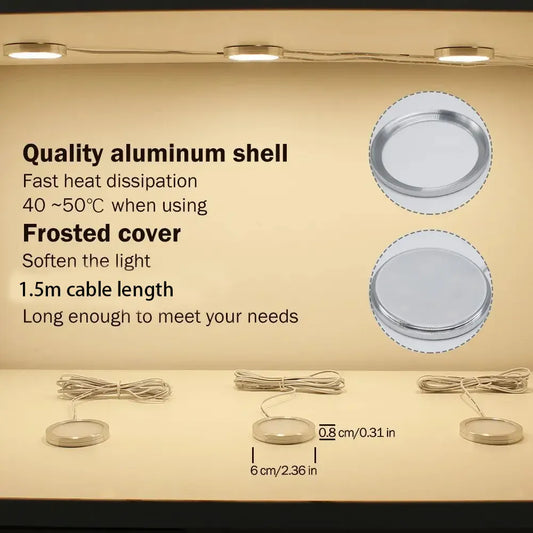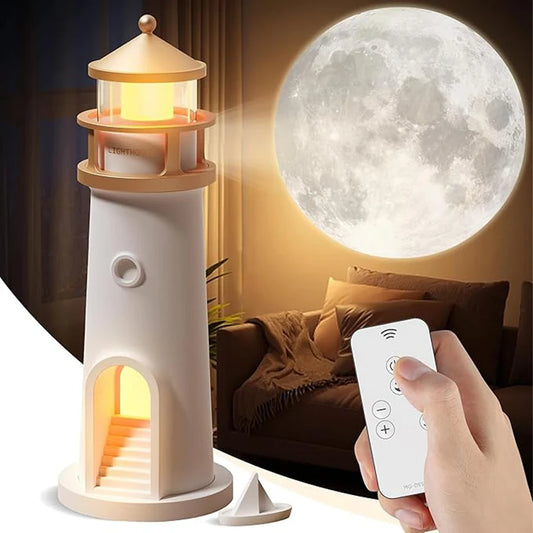
What is the Best Lumens for Under Cabinet Lighting?
Share
Table of Contents
- Understanding Lumens and Lighting Needs
- Expert Opinions and Data
- Comparing Different Lumen Outputs
- Choosing the Right Lumens for Your Needs
- Practical Examples and Tips
- Step-by-Step Guide to Choosing and Installing the Right Lumens
- Conclusion
- FAQs
The best lumens for under cabinet lighting typically range between 200 to 500 lumens per linear foot. This range ensures adequate brightness for tasks while maintaining a comfortable ambiance. Let’s delve into the details, backed by expert advice and practical examples.
Understanding Lumens and Lighting Needs
Lumens measure the total amount of visible light emitted by a source. Unlike watts, which indicate energy consumption, lumens directly represent brightness. For under cabinet lighting, the goal is to provide enough light for tasks like cooking and reading recipes without causing glare or harsh shadows.
Expert Opinions and Data
- Illuminating Engineering Society (IES): The IES recommends a range of 200 to 500 lumens per linear foot for under cabinet lighting. This range provides sufficient illumination for kitchen tasks while preventing eye strain and maintaining a pleasant lighting environment.
- Lighting Research Center (LRC): According to the LRC, the optimal lumen output for task lighting, such as under cabinet lights, should be around 300 lumens per square foot. This ensures that work surfaces are well-lit, enhancing visibility and safety.
Comparing Different Lumen Outputs
| Lumen Range (per linear foot) | Brightness Level | Best For |
|---|---|---|
| 200-300 lumens | Soft, subtle light | Ambient lighting, small kitchens, accent lighting |
| 300-400 lumens | Moderate brightness | General task lighting, medium-sized kitchens |
| 400-500 lumens | Bright light | Detailed tasks, large kitchens, workstations |
Choosing the Right Lumens for Your Needs
200-300 Lumens:
Ideal for smaller kitchens or areas where subtle lighting is desired. This range provides a soft glow, enhancing the ambiance without overpowering the space. It’s perfect for accent lighting or for homeowners who prefer a more relaxed lighting atmosphere.
300-400 Lumens:
A versatile range suitable for most kitchens. It offers a balance between brightness and comfort, making it ideal for general task lighting. This level is sufficient for food preparation and cooking tasks, providing clear visibility without causing glare.
400-500 Lumens:
Best for larger kitchens or areas where detailed tasks are performed. This range provides bright, focused light, ideal for tasks that require precision, such as chopping vegetables or reading fine print. It ensures that every corner of the countertop is well-lit.
Practical Examples and Tips
Example 1: Enhancing Kitchen Functionality
In my own kitchen, I opted for LED strip lights that provide 350 lumens per linear foot. This level offers a perfect balance of brightness for everyday cooking tasks. The even distribution of light along the countertops has significantly improved visibility, making food preparation safer and more efficient.
Example 2: Customizing Lighting for a Home Office
For a client’s home office, we installed puck lights under the cabinets, each providing 400 lumens. This setup provided bright, focused lighting ideal for reading and detailed work. The higher lumen output was necessary due to the client’s need for a well-lit workspace.
Example 3: Ambient Lighting in a Small Kitchen
In a smaller kitchen renovation project, we used LED strips with 250 lumens per linear foot. This provided a soft, inviting light that enhanced the overall ambiance without being too harsh. It was perfect for a cozy kitchen environment where intense task lighting was not required.
Step-by-Step Guide to Choosing and Installing the Right Lumens
1. Assess Your Needs:
Consider the size of your kitchen and the primary tasks you’ll be performing. For general use, aim for 300-400 lumens per linear foot. For more detailed tasks, go higher.
2. Measure the Space:
Measure the length of the cabinets where the lights will be installed. This will help you determine the total lumens needed.
3. Select the Lights:
Choose LED strips or puck lights that match your lumen requirements. Ensure the lights have a good CRI (Color Rendering Index) to accurately display colors.
4. Plan the Layout:
Decide where to place the lights for optimal coverage. Spacing the lights evenly will ensure consistent illumination.
5. Install the Lights:
Follow the manufacturer’s instructions for installation. Make sure the lights are securely attached and connected to a suitable power source.
6. Test and Adjust:
Once installed, test the lights to ensure they provide the desired brightness. Adjust the position if necessary to eliminate any dark spots or glare.
Conclusion
In conclusion, the best lumens for under cabinet lighting generally range from 200 to 500 lumens per linear foot, depending on your specific needs. This range ensures optimal brightness for various tasks, from general cooking to detailed food preparation. By following expert guidelines and considering practical examples, you can choose the right lumen output to enhance your kitchen’s functionality and aesthetics.
For more comprehensive guidance on selecting the best under cabinet lighting for your kitchen, check out our detailed guide: How to Choose the Best Under Cabinet Lighting for Your Kitchen.
Explore our range of energy-efficient under cabinet lighting solutions at Lumaz to find the perfect fit for your kitchen.
FAQs
What is the ideal lumen range for a medium-sized kitchen?
For a medium-sized kitchen, a range of 300-400 lumens per linear foot is ideal. This provides sufficient brightness for general task lighting without causing excessive glare.
Can I use higher lumens for better visibility?
Yes, using higher lumens (400-500 per linear foot) can improve visibility, especially for detailed tasks. However, ensure the lighting is not too harsh and consider using a dimmer switch for flexibility.
How do I measure lumens per linear foot?
To measure lumens per linear foot, check the specifications provided by the light manufacturer. They typically list the total lumens and the length of the strip, which you can use to calculate the lumens per foot.
Are there any energy efficiency concerns with higher lumens?
Higher lumens generally mean more energy consumption. However, modern LED lights are highly energy-efficient, so you can achieve high brightness without significantly increasing energy usage.
Is it possible to mix different lumen outputs in one kitchen?
Yes, you can mix different lumen outputs to create layered lighting. For example, use lower lumens for ambient lighting and higher lumens for task-specific areas.
What should I do if my lighting is too bright?
If your lighting is too bright, consider installing a dimmer switch. This allows you to adjust the brightness to suit different tasks and times of day, providing greater control over your lighting environment.




























 />
/>
 />
/>
 />
/>
 />
/>
 />
/>